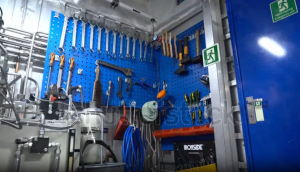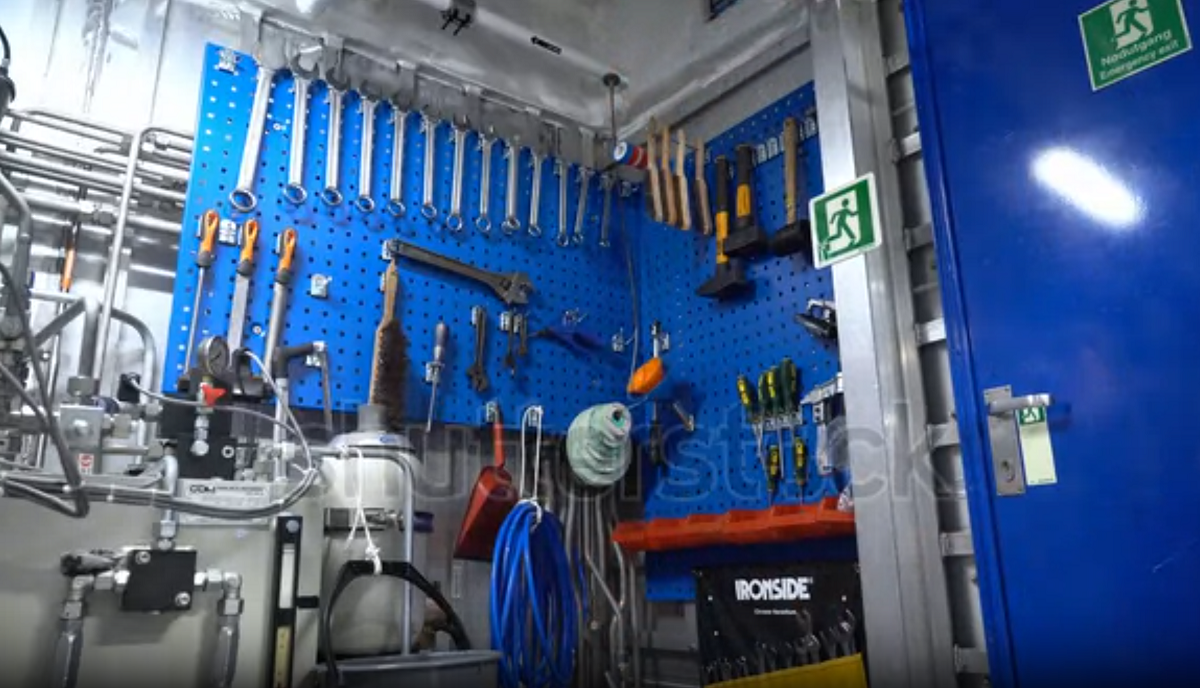The engine room of a ship is a bustling hub of activity, housing the machinery and equipment that powers the vessel. To maintain and operate this complex array of systems, a wide variety of tools are essential. These machinery space tools are crucial for performing routine maintenance, addressing mechanical issues, and ensuring the smooth operation of the ship.
Efficient and safe engine room operations are key to cutting ship running costs. Proper use of tools and regular maintenance reduces fuel consumption, prevent breakdowns, and extend machinery life. Training on advanced tools and technologies helps crews spot inefficiencies early, saving ship costs while supporting environmental and financial goals.
As the engine room is a high-risk area for injuries like burns, cuts, and strains due to improper tool use or safety lapses, training on tool handling and safety protocols is essential to prevent accidents. Equipping crews with emergency response skills, such as first aid, ensures quick action, protecting both crew and vessel.
This article outlines the typical tools found in a ship’s engine room, highlighting their uses and importance.

1. Hand Tools
Hand tools are the most fundamental items in the engine room, used for a wide range of tasks:
- Wrenches: Essential for tightening and loosening nuts and bolts. Common types include adjustable wrenches, torque wrenches, and pipe wrenches.
- Screwdrivers: Used for driving screws into materials. Available in various types and sizes, including flathead, Phillips, and Torx.
- Pliers: Used for gripping, bending, and cutting wires and cables. Variants include needle-nose pliers, slip-joint pliers, and cutting pliers.
- Hammers: Vital for driving nails, fitting parts, and shaping metal. Types include ball-peen hammers and sledgehammers.
- Sockets and Ratchets: Provide a more efficient way to tighten or loosen fasteners in confined spaces.
- Allen Keys (Hex Keys): Used for driving bolts and screws with hexagonal sockets.
2. Power Tools
Power tools increase efficiency and effectiveness in maintenance tasks:
- Drills: Essential for creating holes in various materials. Both electric and pneumatic versions are common in engine rooms.
- Grinders: Used for cutting, grinding, and polishing metal surfaces. Angle grinders and bench grinders are the most common types.
- Impact Wrenches: Provide high torque output to loosen tight bolts and nuts, powered by electricity or compressed air.
3. Measurement Tools
Accurate measurements are crucial for maintaining engine performance and safety:
- Calipers: Used for precise measurement of the dimensions of mechanical parts. Digital and vernier calipers are commonly used.
- Micrometers: Provide highly accurate measurements of small distances or thicknesses.
- Pressure Gauges: Measure the pressure of various fluids in the engine systems, essential for maintaining optimal operating conditions.
- Temperature Gauges: Monitor the temperature of engine components to prevent overheating and ensure efficient operation.
- Tachometers: Measure the rotational speed of the engine’s components, crucial for monitoring performance.
4. Lifting and Moving Equipment
Handling heavy machinery parts requires specialized equipment:
- Chain Hoists: Used to lift heavy components, such as engine parts, during maintenance or repairs.
- Hydraulic Jacks: Provide the necessary lifting power for raising heavy machinery and components.
- Trolleys and Dollies: Facilitate the movement of heavy parts around the engine room.
5. Cleaning Tools
Maintaining a clean engine room is essential for safety and efficiency:
- Degreasers: Chemical solutions used to remove grease and oil from engine components.
- Brushes and Scrapers: Used for cleaning various surfaces and removing debris or buildup.
- Vacuum Cleaners: Industrial-grade vacuum cleaners help in removing dust, metal shavings, and other particles from the engine room.
6. Safety Equipment
Ensuring the safety of the crew is paramount:
- Personal Protective Equipment (PPE): Includes gloves, safety glasses, ear protection, and hard hats.
- Fire Extinguishers: Essential for immediate response to any fire incidents in the engine room.
- Gas Detectors: Monitor the presence of harmful gases, ensuring a safe working environment.
- First Aid Kits: Equipped to handle minor injuries that may occur during maintenance tasks.
7. Specialized Tools
Certain tasks require specialized tools tailored to specific components of the engine:
- Valve Seat Cutters: Used for machining the seats of engine valves to ensure a proper seal.
- Cylinder Bore Gauges: Measure the diameter and wear of engine cylinders to maintain proper function.
- Bearing Pullers: Facilitate the removal of bearings from shafts and housings without causing damage.
The engine room of a ship is a complex environment that demands a wide array of tools to ensure smooth and efficient operations. From basic hand tools to specialized equipment, each tool plays a vital role in maintaining the ship’s engine and related systems. Proper training and knowledge of these tools are essential for the engineering crew to perform their duties effectively, ensuring the safety and reliability of the vessel. As maritime technology advances, the tools and techniques used in engine rooms will continue to evolve, further enhancing the capabilities of modern ships.
🚢 Want to learn more? For additional related information, we recommend reading the following article:
Tools and Instruments Commonly Used in the Engine Room of Ships

